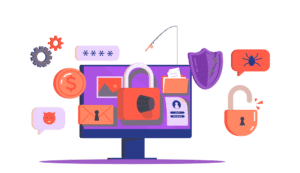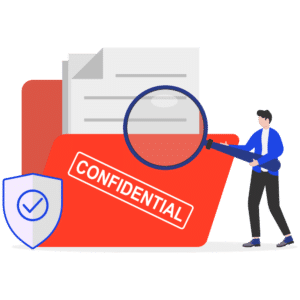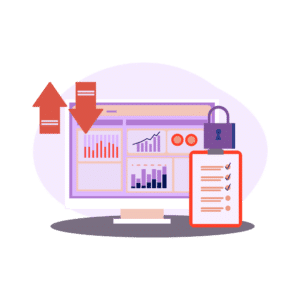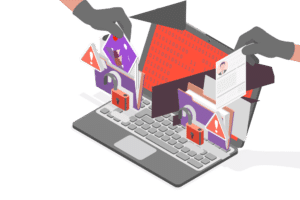Understanding the Snowflake Data Breach: Lessons for Salesforce Security
The recent Snowflake data breach, what was once announced to be a limited number of accounts, has recently snowballed and sent ripples through the tech community. This incident is a wake up call for companies using cloud services, like Salesforce to reassess their security practices and configurations. Let’s dive into the similarities between how Snowflake was exploited, security risks in Salesforce, and how to mitigate them.

The Snowflake Breach Overview
The Snowflake data breach involved cybercriminals exploiting stolen credentials to access customer accounts. The attackers used infostealer malware to obtain login details and bypass security measures. Despite Snowflake’s robust security infrastructure, the lack of multi-factor authentication (MFA) on certain customer accounts and demo environments enabled unauthorized access (Enterprise Technology News and Analysis) (ITPro).
Key Security Lapses in Snowflake
- The attackers used stolen credentials from a former employee to gain access.
- Accounts without MFA were more vulnerable, allowing attackers to bypass standard login security.
- The breach involved accessing demo accounts, which, while not directly connected to Snowflake’s production systems, still poses a significant risk to note (SecurityWeek) (Help Net Security).

Salesforce Security
Similar to Snowflake, Salesforce users face risks if security best practices are not followed. It’s not just about Salesforce’s infrastructure being protected, encrypted and trusted; it’s also about how companies leverage the platform and configure it. There’s a responsibility on the part of the customers to ensure their configurations are secure. I often say, with great power comes great responsibility, and Salesforce’s flexibility offers great power. Here are some key areas where customers can responsibly configure Salesforce to limit exposure and protect their data from similar vulnerabilities.
- Credential Management:
- Risk: If user credentials are compromised, attackers can gain unauthorized access to Salesforce data.
- Mitigation: Implementing MFA is critical. Salesforce provides MFA as a standard feature, and it should be enforced for all users to add an extra layer of security.
- Inactive Accounts:
- Risk: Old or unused accounts, especially those of former employees, can become targets for attackers.
- Mitigation: Regularly audit user accounts and promptly deactivate or freeze inactive ones. Using Salesforce’s login history and active user reports can help track and manage these accounts.
- Demo and Sandbox Environments:
- Risk: Demo and sandbox environments, if not secured properly, can be exploited as entry points for attackers or inadvertently expose data that isn’t properly protected.
- Mitigation: Ensure that development, demo and sandbox environments have the same security configurations as production environments. Implementing strict access controls, data masking and regular security reviews to mitigate risks associated with these environments.
- Single Sign-On (SSO) Misconfigurations:
- Risk: Misconfigured SSO can lead to vulnerabilities, making it easier for attackers to exploit.
- Mitigation: Properly configure SSO and ensure that it integrates with MFA. Regularly review and test SSO settings to ensure they align with security policies.
- Data Governance:
- Risk: Inadequate data governance can lead to unauthorized data access and leakage.
- Mitigation: Implement role-based access control (RBAC) to restrict access based on user roles. Use Salesforce’s sharing and visibility settings to ensure that sensitive data is only accessible to authorized personnel.

Lessons Learned and Best Practices
The Snowflake breach really teaches us the importance of robust security practices, especially in cloud-based environments. However, for me, the real lesson goes beyond the technical vulnerabilities of platforms like Snowflake or Salesforce. It’s about governance, user knowledge and the ongoing commitment to security at every level of a company.
As Salesforce adopters, users, developers, administrators and managers we can draw several lessons from this incident beyond the technical configurations:
- Enforce effective governance policies. This includes clear, actionable and implemented controls around access control, user permissions, data management and protection.
- Regular security audits and continuous monitoring of the peripheral environment, user activities and changes in settings are a proactive way to identify and mitigate potential vulnerabilities before they happen.
- Security is only as strong as its weakest link, therefore our biggest stakeholders need to be trained and reminded on security best practices and the importance of safeguarding login credentials through MFA, or being aware of how to avoid social engineering tactics.
- Employ the practice of the principle of least privilege and ensure proper configuration and regular maintenance of the platform from inactive accounts, to demo orgs, as we have seen, misconfigurations can lead to significant security risks.
Ultimately, the security of these powerful tools and platforms relies heavily on human responsibility and how we as developers, managers, administrators manage them and their use. With great power comes great responsibility and that responsibility must be shared by everyone.
For further reading on securing Salesforce environments, you can refer to Salesforce’s Security Best Practices.
By aligning Salesforce security configurations with these best practices, companies can mitigate risks and protect their valuable data from cyber threats.

**AI Content Disclaimer:**
Note: This blog post was refined with the help of an AI-powered assistant, which provided structural and content suggestions based on a complete initial draft. The final ideas, advice, and viewpoints are rooted in the author’s expertise, with AI serving to enhance clarity and readability. The author maintained full control over content decisions, ensuring the blog reflects accurate and authentic insights into managing Salesforce systems.






